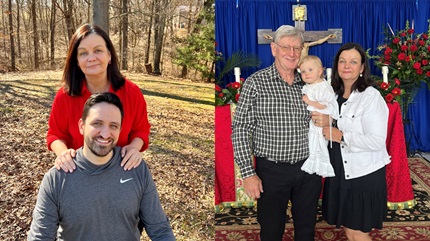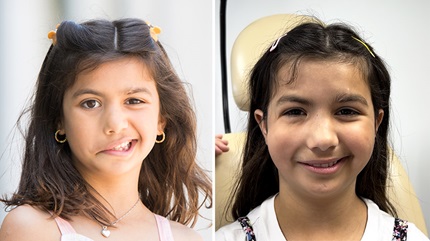Overview
Facial function and movement is critical to our sense of self, personal expression, and social interaction. For this reason, paralysis, weakness, and movement disorders of the face can be devastating. Conditions that affect facial movement can result from a variety of medical, surgical, infectious and traumatic insults. Among the most common causes of facial movement disorders are Bell’s palsy, brain surgery, and parotid gland surgery. Each person’s circumstance is different in terms of severity of symptoms and the effect on his or her life. Therefore, efforts to improve facial function and quality of life need to be highly personalized.
Treatment of these conditions requires in-depth knowledge of facial anatomy, function and aesthetics. Surgeons and physicians who treat these conditions must have advanced training and a high level of experience in this specific area. Our group of highly specialized head and neck and facial plastic surgeons have significant experience in the treatment of all conditions affecting form and function of the face.
When planning medical and surgical treatment of facial paralysis and movement disorders, a high level of expertise is required to optimize objective outcomes and quality of life for each person. Our team of experts works together to formulate and execute plans to achieve the best possible outcomes.
Our Doctors
Reconstructive Surgeons
Neurologists and Neurosurgeons
Neurotologists
Neurologists
Conditions & Treatments
What we treat
- Acoustic neuroma.
- Bell’s Palsy.
- Botox treatment.
- Facial neuroma.
- Facial nerve grafting / facial reinnervation.
- Facial synkinesis.
- Facial paralysis.
- Gracilis muscle transfer.
- Hemifacial spasm.
- Orthodromic temporalis tendon transfer.
- Parotid gland cancer.
- Physical therapy for facial paralysis.
- Ramsay Hunt Syndrome.
- Selective neurolysis for facial paresis.
Treatments
When the facial nerve (nerve than controls facial movement) is injured, multiple conditions may result and often occur in combination.
- Facial paralysis or weakness results from inadequate nerve signal to the facial muscles, causing facial drooping or loss of expression.
- Synkinesis (discoordinated or unwanted movement of facial muscles) occurs following partial recovery of the facial nerve due to inappropriate regeneration of nerve fibers.
- Facial tightness results from abnormal nerve signal following nerve regrowth, which can impair movement of certain parts of the face.
Several treatments exist for disorders of facial movement and paralysis.
- Botox is an effective, minimally-invasive treatment for facial asymmetry and unwanted facial movements. It can result in vastly improved facial expression and function.
- Nerve grafting works to restore function to facial muscles that have otherwise lost their normal nerve input. These procedures can be performed alone or in combination.
- Cross facial nerve grafting — Nerve signal from the unimpaired side of the face is used to power and drive movement on the paralyzed side.
- Masseter nerve transfer — A branch of the “chewing” nerve on the paralyzed side of the face is used to restore function to nearby facial muscles.
- Hypoglossal nerve transfer — A portion of the nerve that powers the tongue is used to improve function on the paralyzed side.
- Selective neurolysis is a technique to treat impaired smile function and synkinesis by carefully selecting and removing branches of the facial nerve that cause impaired facial movement due to abnormal nerve signal.
- Temporalis tendon transfer works by surgically reinserting one of the chewing muscles from the jaw to the corner of the mouth to restore smile and oral function.
- Gracilis muscle transfer is a highly complex procedure whereby a muscle from the inner thigh is transplanted to the paralyzed side of the face to restore smile and oral function. This is done using microvascular techniques and precise planning.
Appointments
Make an appointment
Cleveland Clinic Center for Facial Reconstruction and Facial Nerve Disorders offers consultations at Cleveland Clinic main campus.
Phone: 216.445.9259
Email: FacialReconCenter@ccf.org
After you call to arrange an initial appointment with our team, one of our providers will reach out to you to perform a pre-visit intake. Please make arrangements to have copies of prior imaging, imaging reports, operative notes, laboratory studies, pathology reports, and consult notes available that you would like us to review prior to your appointment.
Virtual visits
You can now stay connected to your healthcare team through virtual visits, using your smartphone, tablet or computer.
Why go virtual? It's an easy, convenient and secure way to see your provider face-to-face without having to leave home. This saves you travel time, parking fees and time spent in the waiting room — and you can also have a loved one or caregiver join you. If appropriate, you can also get a prescription sent to the pharmacy of your choice.
Many insurance companies cover the cost of virtual visits, so check with your insurance company ahead of time. Interested in getting started? Call your provider to find out what virtual visit options are available.
MyChart
A secure online tool connecting patients to their own health information from the privacy of their home.
The MyChart • Caregiver service, an optional feature in MyChart, allows you to view family members' records. When clicking on a particular name, you will access that family member's MyChart account.
Whether you have caregiver access over one family member or several, you can view this list in MyChart under "My Family’s Record."
Patient Stories
Surgery Restores Woman’s Function and Confidence After Facial Paralysis
Mar 13, 2024
"I always told my kids to never let anything hold them back and I didn’t want the way I looked to hold me back. But because of Dr. Byrne’s compassion, understanding and ability to see things from my viewpoint, I now feel confident in the way I look."



















